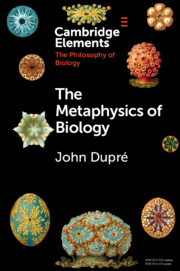Element contents
The Metaphysics of Biology
Published online by Cambridge University Press: 06 May 2021
Summary
- Type
- Element
- Information
- Online ISBN: 9781009024297Publisher: Cambridge University PressPrint publication: 03 June 2021
Bibliography
- 38
- Cited by



